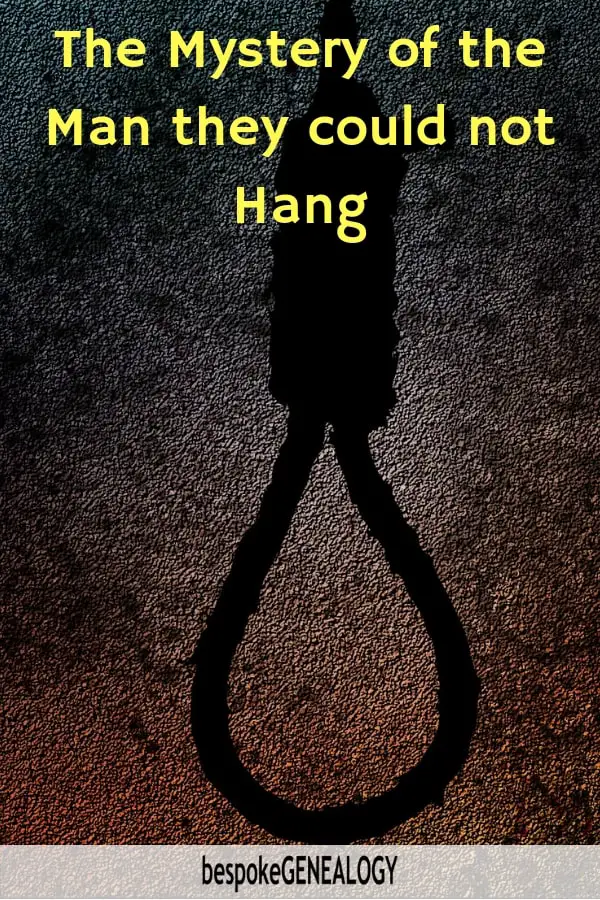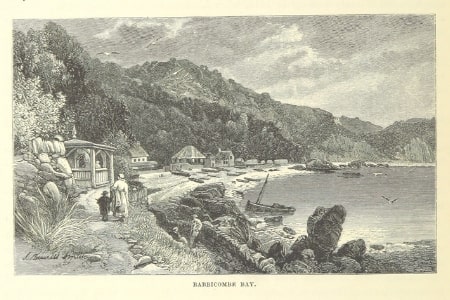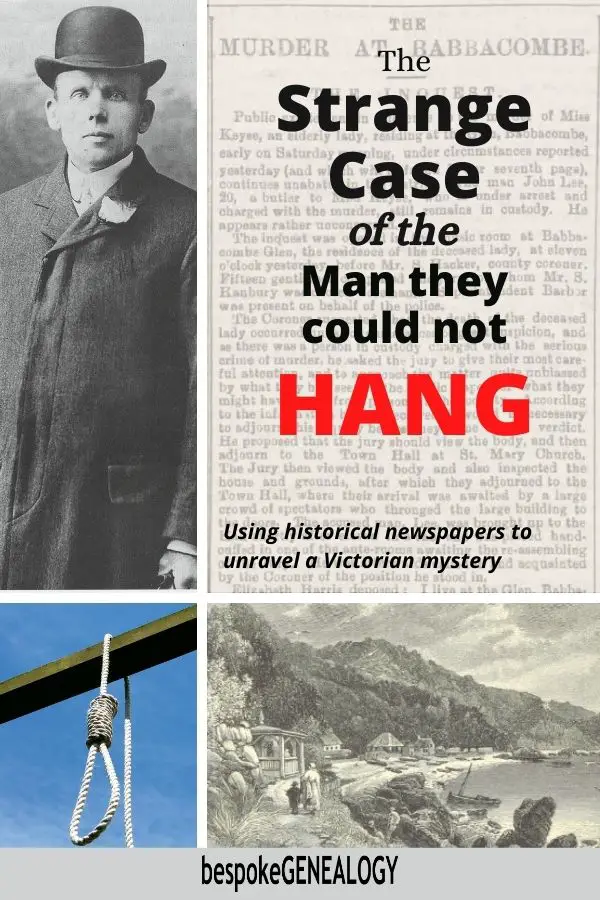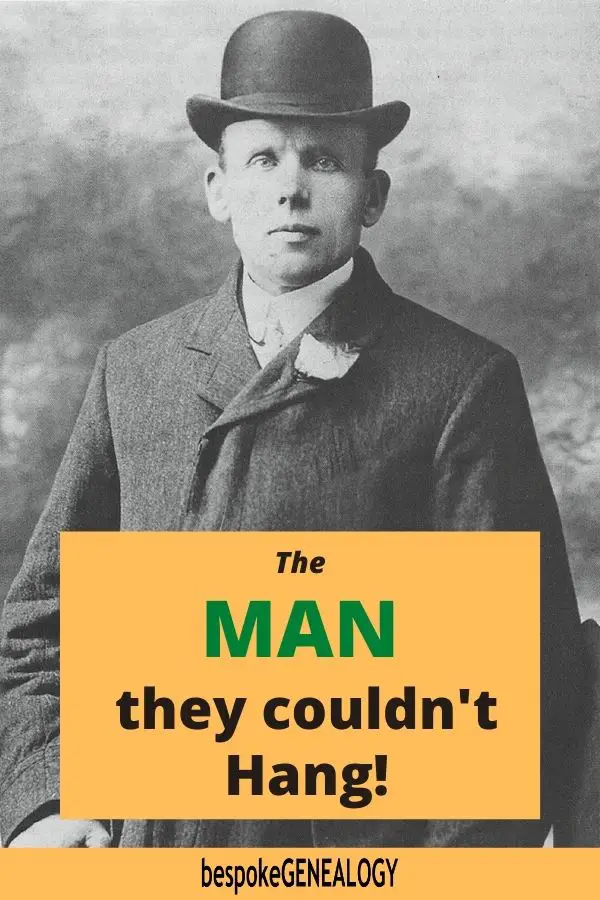As I discussed in a previous post, online historical newspapers are great resources for genealogy research. As well as yielding direct genealogical data like birth, marriage and death announcements, they can also add context to our ancestors lives. Sometimes an ancestor may have been the subject of, or connected to, a major crime or event. So I thought I would look at a notorious murder and the man accused of it and, using Findmypast’s BNA newspaper collection, see how it was reported at the time. So here is the case of the man they could not hang.

Back in the 1970s, when I was a teenager, I bought an album by the British folk-rock band Fairport Convention called Babbacombe Lee. The LP is a concept album; a folk-rock opera about the true story of John “Babbacombe” Lee, otherwise known as “the man they could not hang”.
Lee was sentenced to death for the murder of his employer in 1885, but when the execution was due to be carried out, the gallows failed three times and Lee survived. His death sentence was commuted to life imprisonment and he was released in 1907 after serving 22 years.
The Fairport Convention album got good reviews in the music press at the time but it wasn’t a commercial success. If you’ve never come across it and you like traditional English music and history I would recommend getting it if you can.
The record was re-mastered and re-issued in 2004 and this is the version you should get as it comes with two bonus tracks and a booklet containing John Lee’s account of the murder and his “execution” which was published in 1907 after his release from prison.
Click here to see it on Amazon
The booklet that comes with the album contains a facsimile from the Lloyd’s Weekly News of 1907 of John Lee’s account of events already mentioned. He always protested his innocence and this article is, understandably, one sided. So, I looked at contemporary press reports from the British Newspaper Archive (using my subscription to Findmypast) to see if I could piece together events. This, hopefully, will demonstrate how useful newspaper archives are to genealogy research.
The Crime

The murder took place in the coastal town of Babbacombe in Devon. It was sensational news at the time as murders outside the big cities were not very common and this was a particularly brutal one. As such it was reported widely throughout the country. Here is part of the account from the Western Times of Monday 17 November 1884:
“The neighbourhood of Babbacombe, situated about two miles from Torquay, was the scene early on Saturday morning of a terrible tragedy, which has caused the greatest excitement and consternation. The victim is Miss Whitehead Keyse, a maiden lady of about 68 years of age, who was found in her residence, “Babbacombe Glen,” with her throat cut from ear to ear, and a severe fracture on the right side of her head”.
Miss Keyse had lived in the house for many years and employed some servants. Those living in the house were two elderly sisters; Jane and Eliza Neck, Elizabeth Harris, the cook, and John Lee, then aged 20 who was employed to do odd jobs and wait the table. He was described as a butler in this news reports. Harris was Lee’s half sister (they shared the same mother). Lee had previously worked at the house when he was younger and had recently returned.
Harris had said that she was awoken in the early hours of the morning by the strong smell of burning and discovered smoke ascending the stairs. The report in the Western Times goes on (apologies for the gruesome details):
“The servants found the body of Miss Keyse in the dining room, near the sofa, with her head severed almost from her body by a long, deep gash, apparently inflicted by a razor. There was a terrible fracture on the right side and towards the back of the head, which appeared to have been caused by a heavy downward blow. The unfortunate lady was in her night dress at the time, which was burnt in several places, and her flesh was charred. She appeared to have been dead for about an hour. There was a large pool of blood at the door of the drawing room, but little or no marks of blood where the body was found”.
Later in the article:
“As the result of some inquiries, suspicion fell upon Lee, the butler, and about eleven o’clock P.S. [police sergeant] Nott apprehended him in the grounds, and he was conveyed to the cells at the Torquay Police Station. There was a slight wound on the accused’s right arm, from which blood had flowed, and he explained before his arrest that this was caused by his breaking the glass of the drawing-room window to let out some of the smoke”.
The Inquest
The Inquest into the death of Miss Emma Ann Whitehead Keyse took five days over a two week period to allow evidence to be examined in London. The proceedings were widely and extensively covered so there is a mass of information to read in online newspapers. The Inquest jury were first taken to the murder scene before the rest of the inquiry was heard at the nearby St. Mary Church Town Hall. Here is an extract from The Exeter and Plymouth Gazette Daily Telegram from Tuesday 18 November 1884 reporting on the first day of the Inquest:
“The jury were then conducted through the various apartments of the house by PS Nott, who had been sworn; and, with the Coroner, they viewed the body of the deceased, which had been removed to an upstair [sic] bedroom, called by the household the “blue-room.” The body was here laid upon a sofa, and being in the same condition as when discovered on Saturday morning it presented a most sickening appearance. The bedroom of the deceased – upon the same landing – was next inspected, and it was clearly demonstrated that the bed in this room had been separately ignited by someone, the fire in the other part of the house having no connexion with it whatever.
In the dining room the burnt furniture remained as it was found. The sofa, chairs, and pictures were charred, and from the carpet and sofa could be traced a distinct smell of petroleum. It was alleged during the inspection that the nightdress of the deceased lady bore similar indications, while the can in which the oil was kept, and which was known to have contained a lot of oil on the previous day, was on Saturday morning found to be comparatively empty. In addition to this, it is said that a pair of socks belonging to the prisoner have been found to be saturated with a similar kind of oil.
The other parts of the house having been examined by the jury, about 12:30 the Inquest was reopened at the St. Mary Church Town Hall. The large hall was crowded, and the evidence of the various witnesses was listened to with great attention.
Over the course of the five days, the newspaper reports detail how the Inquest heard from a number of witnesses and the amount of circumstantial evidence against John Lee grew quite significantly. This evidence included:
- Lee’s shirt and trousers had blood stains on them
- During the fire, Lee helped Jane Neck to safety and blood from Lee’s arm was transferred to her night dress.
- A bloodstained knife was found in a drawer in the pantry next to Lee’s bed.
- An almost empty oilcan was found next to Lee’s bed. The can should have been almost full.
- A pair of socks belonging to Lee were found which were soaked in oil and hairs from the deceased’s body
- A pool of blood was found in the hallway close to the pantry where Lee slept.
The Inquest concluded on 1 December and the Western Daily Press reported on Tuesday 2 December 1884:
“On conclusion of the evidence the jury retired, and after half-an-hour’s deliberation, returned with a verdict of wilful murder against John Lee.”
John Lee had already been remanded in custody. He remained behind bars until his trial; set for the following February.
The Trial
The trial of John Lee for murder lasted for three days and began on 2 February 1885 at the Castle in Exeter. Most of the ground covered in the Inquest was used against Lee. However, probably the most damning evidence came from his sister, Elizabeth Harris, as reported in the Yorkshire Post, Tuesday 3 February 1885:
“Elizabeth Harris, cook and half-sister, detailed a conversation in which the prisoner threatened that if Miss Keyse did not give him a character [reference] he would lay the place in ashes. She asked him not to burn her in it, and he promised to let her know. At other times he said he would be revenged, as Miss Keyse paid him so little. When she found fault one day he said that if she had been near the cliff he would have thrown her over. On subsequent occasions he said he would burn the house, and stand on the hill and watch the flames until arrested.
In cross examination she admitted that being unmarried she was enceinte [pregnant]. She did not attach any importance to the threats uttered by Lee against his mistress, and that was the reason she mentioned them to no one.”
On the third and final day, the Western Times of Thursday 5 February 1885 reported the close of the trial:
“The jury then retired to consider their verdict, and after being absent three-quarters of an hour returned to Court; the Judge again took his seat, and the prisoner was placed in the dock. THE CLERK OF ASSIZE: Gentlemen of the jury, have you agreed upon your verdict? – THE FOREMAN: Yes, – Do you find the prisoner, John Lee, guilty or not guilty? – We find him guilty. – You say he is guilty of murder? – Yes. – Is that the verdict of you all? – That is the verdict of us all.
The CLERK, addressing the prisoner, asked whether he had anything to say why sentence of death should not be passed upon him according to the law, and the prisoner replied in a clear voice, “I say I am innocent, sir.””
The judge then put on his black cap and passed the sentence of death.
The “Execution” – The man they could not hang
The execution by hanging of John Lee for the willful murder of Emma Keyse was due to take place at the County Prison in Exeter at 8:00am on Monday 23 February 1885. I’ll hand over to the Western Times of Tuesday 24 February 1885 to explain what happened:
“He [Lee] was placed on the drop, the Chaplain standing outside a little to the left still reciting the Burial Service. Lee followed the minister through the passages and responded fervently. Berry [the executioner] immediately commenced his ghastly work, and a series of scenes of a most painful character ensued. The condemned man’s arms had been previously strapped and Berry now proceeded to pinion his legs. The white cap was drawn over his face, he was placed in the precise position required, all stood expectant, and Berry stepping back pulled the lever.
Instead of the drop falling to answer to this touch, as it should have done, there was a dull thud, caused by a slight downward jerk of the scaffold, but the doomed man remained standing unmoved.
The drop had refused to act, and the officials were astounded at the result. Berry passed a hurried word or two to the warders, some of whom at his direction joined him in jumping on the drop several times, but the only response was the springing of the planks on which the prisoner stood quivering and unable to see what was going on.
Eventually the noose was slackened from his neck, and at six minutes after eight Lee was taken off the drop and led into the court-yard. Even at this terrible time Lee retained his firmness and the Chaplain continued his religious offices. Berry and the attendants proceeded to ease the drop, the condemned man standing by listening to the hammering and shifting of planks and bolts.”
Two more attempts were made to hang Lee, but each time the result was the same; there was a thud and the trap doors would only open slightly. After the third attempt, the Prison Governor called a halt to the proceedings and went immediately to see the Home Secretary in London. The eventual result was that Lee’s sentence was commuted to life imprisonment. He was actually released after 22 years, in 1907.
Listening to the Fairport Convention record (above) and reading John Lee’s own account of events I’d always assumed that he was innocent of the crime and by good fortune (or an act of God), he was spared an early death. After reading the fascinating newspaper accounts this weekend I’m not so sure that he was innocent. This case happened well before forensic investigating was introduced or even before fingerprinting, so I’m sure the police today would be a lot more thorough. However, the evidence was all circumstantial and I’m sure that if the trial was held today, he wouldn’t be convicted.
As for why his execution failed, the official reason was that the rain had warped the timbers, preventing the mechanism from working properly. However, searching the Findmypast BNA database for articles on John Lee, I found this letter published in the Western Morning News on 13 March 1945:
“Sir, – About 25 years ago I read a death bed confession of a fellow prisoner, a carpenter, detailed either to make or do something to the trap-door of the scaffold.
He confessed he told John Lee to stand on the middle board of the trap-door, as he would make that one board warp, so that when his weight was on it, it straightened sufficiently to hold the door up.
As the trap-door would fall without any weight on it those concerned thought there was a divine providence behind it. There was also a sketch of the scaffold and it was headed “The man who played a practical joke”
JR PILE
39, Torrington-Street, Bideford E., March 10.
Well, that’s interesting, but I don’t really believe it as Lee wouldn’t have seen where he was standing as he was wearing the white cap covering his face. Berry, the executioner, positioned Lee on the trap-door, so the only way that this would be true would be if there was a conspiracy and he was involved as well. I’ll have to investigate further.
Please leave a comment if you have anything to add to this story.
Online newspapers can add another layer of detail to historical and genealogical research. In my view, if you have British and/or Irish ancestors, having access to the British Newspaper Archive collection alone justifies the cost of a full membership Findmypast package. Incidentally, potential new members can try Findmypast for 14 days for free. See here for more details.
Alternatively you can just subscribe to the British Newspaper Archive collection directly at their website here.
Happy researching!
Please pin a pin to Pinterest:







Interested to know if you have any details about John Lee’s family or have maybe drawn up a family tree following your research,as I believe I’m be related to him on my dad’s side. Would dearly love to know more!
Hi Liz,
Thanks for your comment. Unfortunately, I haven’t researched John Lee’s family. I used his case here to demonstrate the value of using historic newspapers in family history. When I was researching the article, I noticed that there is a lot of information on the web, like this page with some family information: http://freepages.rootsweb.com/~alanelliott/genealogy/Lee%20Family.HTML . If you Google “John Babbacombe Lee”, you should find more.
Good luck
Alistair